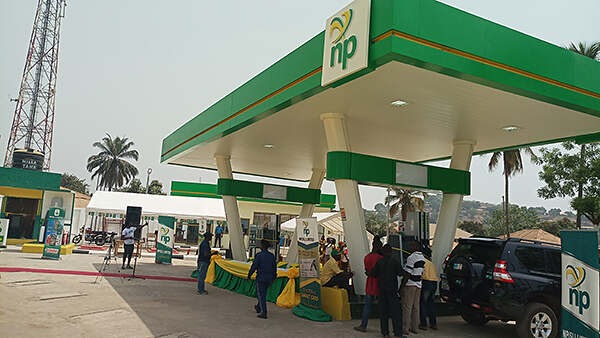
Government has so far applied about Le240Billion to stabilize Fuel prices in Sierra Leone. The policy to stabilize petroleum products will tighten the fiscal space if Government does not review the stabilization policy.
With the petroleum downstream sector contributing almost 15% to the country’s domestic revenue, Government has been carrying the burden by injecting billions of Leones to stabilize fuel pump prices as a way of cushioning the impact of global shocks in oil prices.
Pump prices are determined by the combined effects of the international reference price (Platts) and the value between the USD and the Leones.
As global demand outstrips supply exacerbated by various Geopolitical activities the international oil prices continue to soar since June 2021. The Platts for petrol has increased by 62% since January 2021, 67% for diesel within the same period.
The average exchange rate has also depreciated by 12.6%. Sierra Leone’s current pump price of Le10, 000 is far below the actual market prices.

Amidst the implementation of the Government’s flagship Free and Quality Education, statistics from the Petroleum Regulatory Agency shows that Government has applied a whooping Le248 billions in revenue from January 2021 to January 2022 to stabilize pump prices at Le10, 000.
Despite the global price increases, Sierra Leone kept the pump prices unchanged at Le7,000 per liter for six months, and Le10,000 since July last year even below the Africa Regional average, making it the lowest in the sub region.
Sierra Leone being a net-importing country, solely relies on private Oil Marketing Companies to meet its 1.2 million litres daily consumption of fuel and the lack of adequate storage facility has seen frequent replenish of products.
While the sector is regulated, prices are not determined by government but a combination of the international oil reference price (PLATTS) and foreign exchange rate.
Even Ghana as an oil producing country sells a litre of fuel at US$1.06 dollars.
It is no gain-saying that government’s effort to stabilize pump prices has benefited smugglers a lot as smuggling fuel across our porous borders to neighboring countries is on the rise.
According to pundits, the ongoing brewing conflict between Russia and Ukraine has the potential to take oil price to US$100 dollars per barrel.
With such development, government may continue to lose billions in revenue if it continues to cushion the high cost of fuel, thereby not been able to carry on with other developments.














